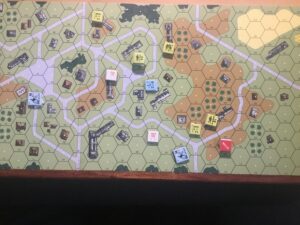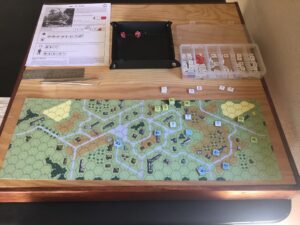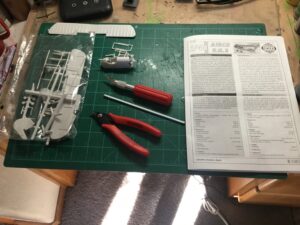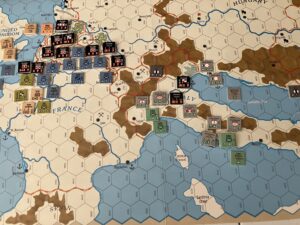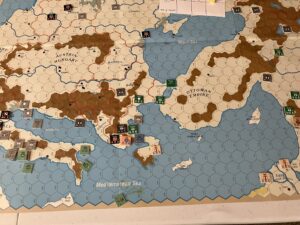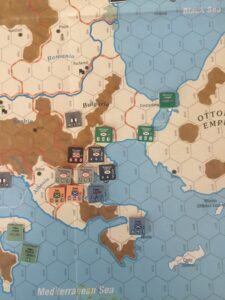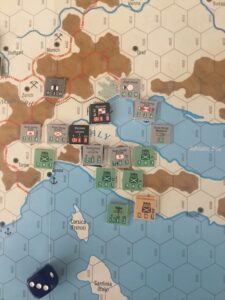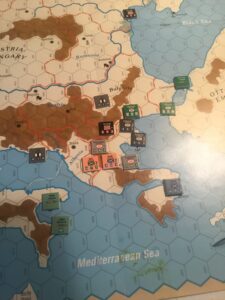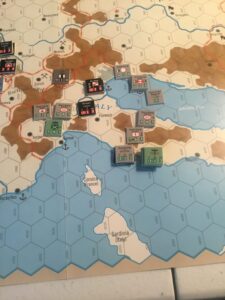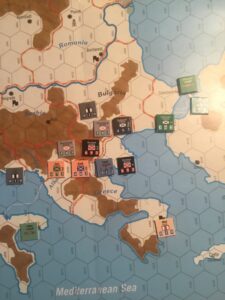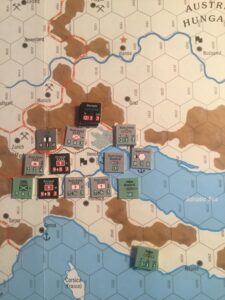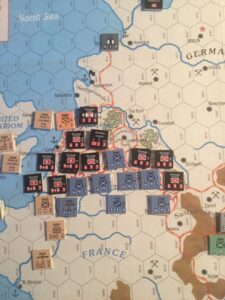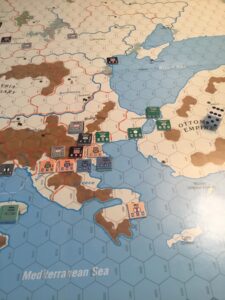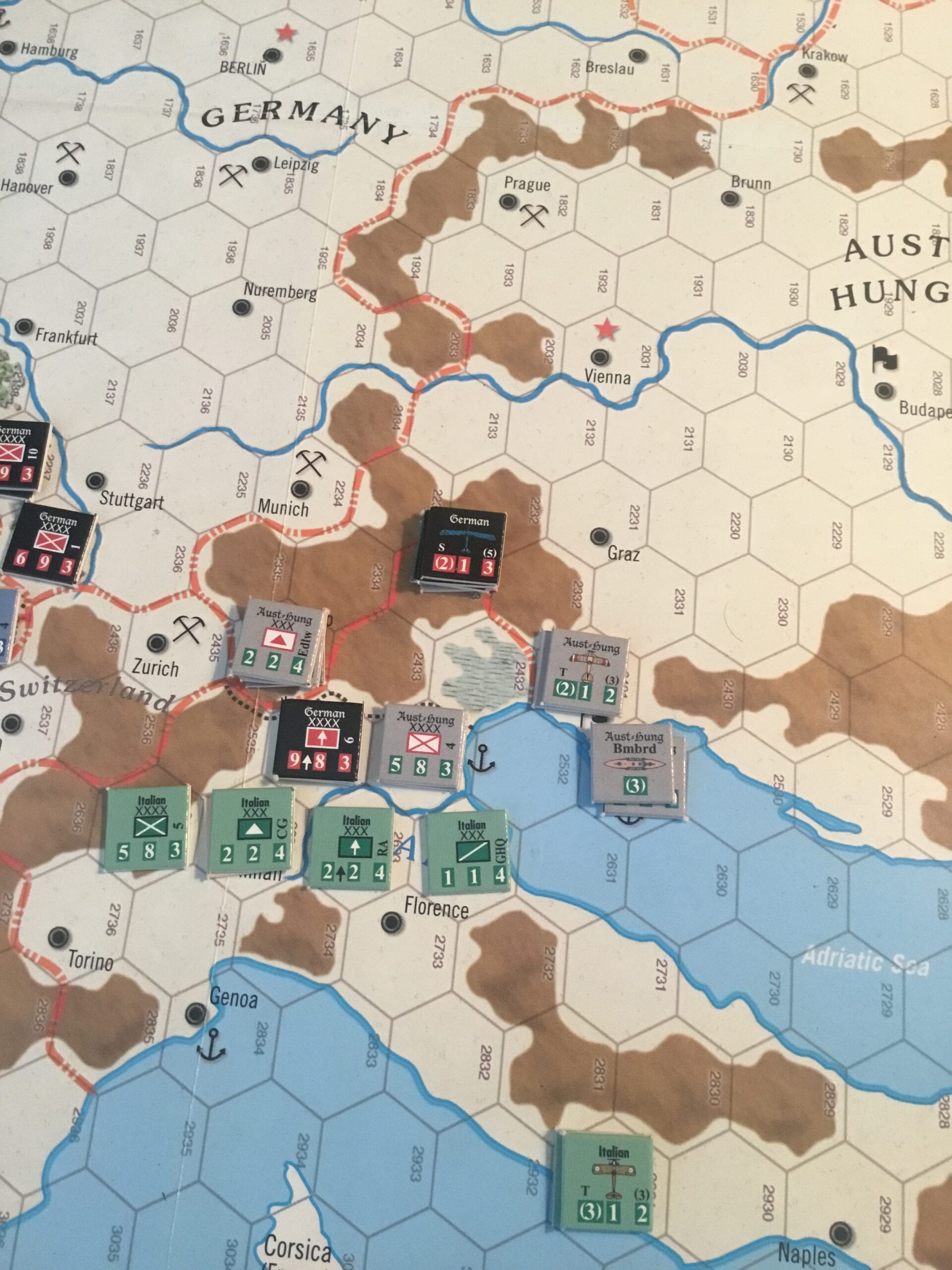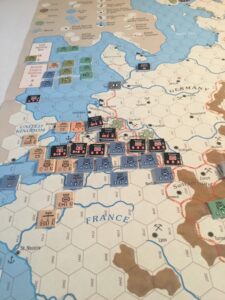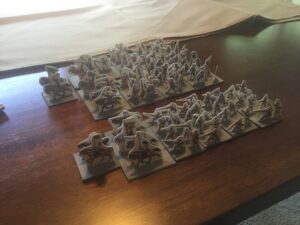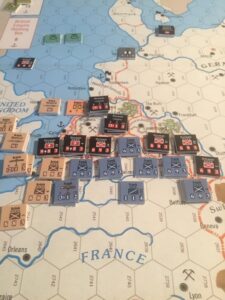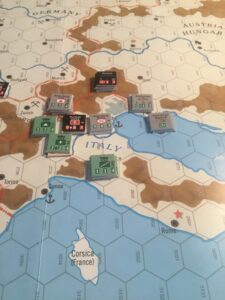The Allies added three (3) Italian and one (1) US Army during their mobilization phase. The Italians will arrive at the beginning of Turn 3, with the US Army not arriving until Turn 4.
Arriving Allied units were fed into gaps on the Western Front and Italy. A French army sailed to and arrived in Salonika. The Allies did not mount any attacks, content to remain on the defensive this turn.
At the end of the turn, the Victory Point count was Central Powers @ 132 and Allies @ 60. This would be a significant Allied victory if the game ended.
The calculation of victory points is a little different. Each country has a basic victory point production of 43 points. I had to figure that out myself. These points are for Major Capitals, Resource Centers and Political Cities occupied at the beginning of the game. My understanding is that these points (+/- points for enemy capitals, resources, political cities taken) are added at the beginning of the turn to the net victory points calculated at the end of the preceeding turn.
Here are the three major theaters and the end of the game turn.
The Central Powers started Turn 3 by mobilizing one shock army and deploying the few units they had (or could) mobilize at the beginning of Turn 2. Another series of shock army attacks on the Western Front drove back the newly arrived US Army. They managed to avoid elimination by a fortunate die roll.
To the East, continued attacks drove Allied units back into Rome and Genoa. These will be tough cities to capture, but are needed for victory points.
German, Austrian and Bulgarian armies continued to advance in Salonika, eliminating the original French Army.
One aspect of the rules that takes some getting used to are Zones of Control (ZOC). Unlike many other games, friendly units (except those representing fortified zones, or trench lines) do not negate enemy zones. So, a unit can be eliminated if retreating through a friendly hex in a enemy ZOC, or if a supply line runs through a friendly unit, but that unit is in an enemy ZOC.
